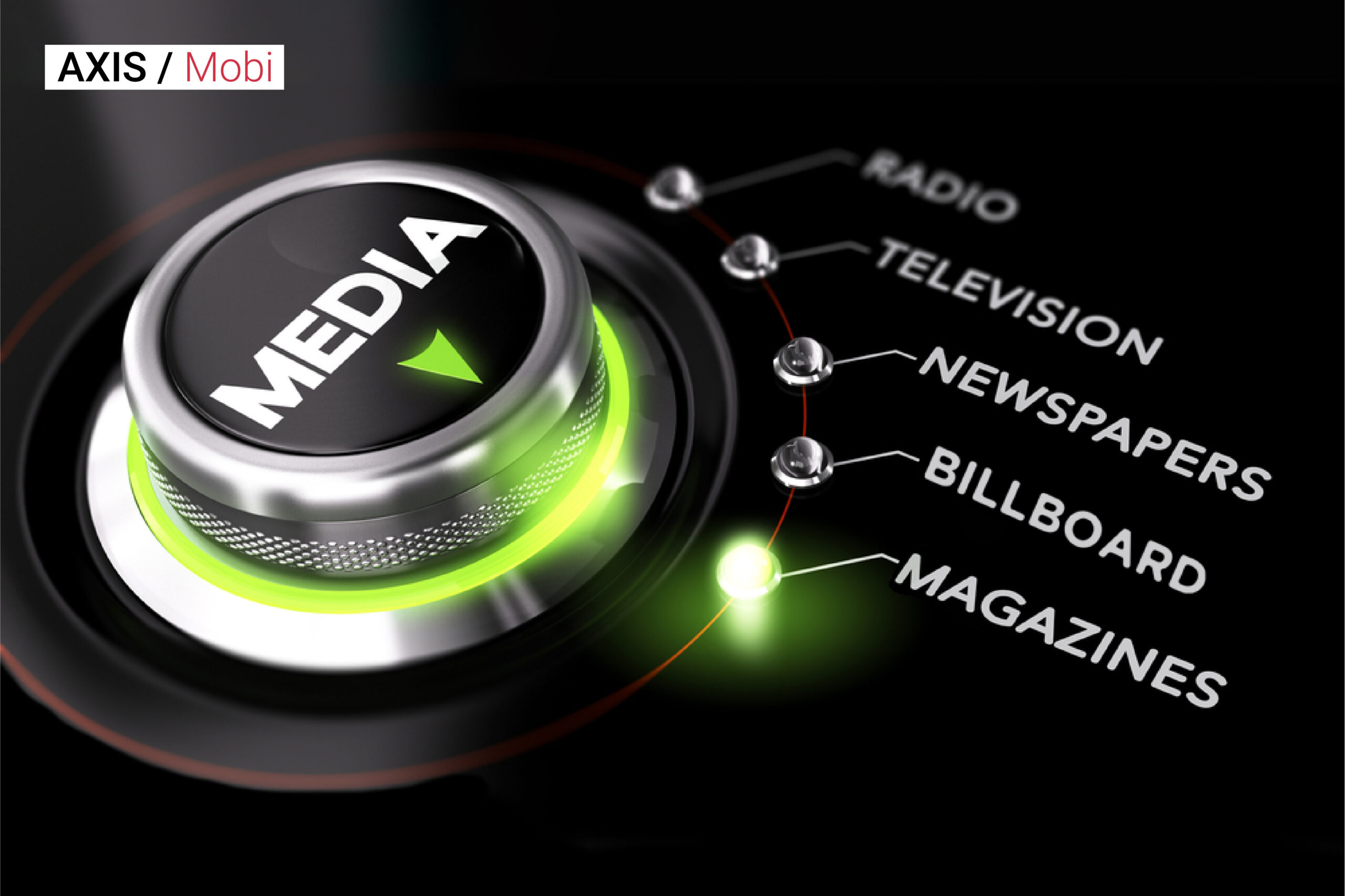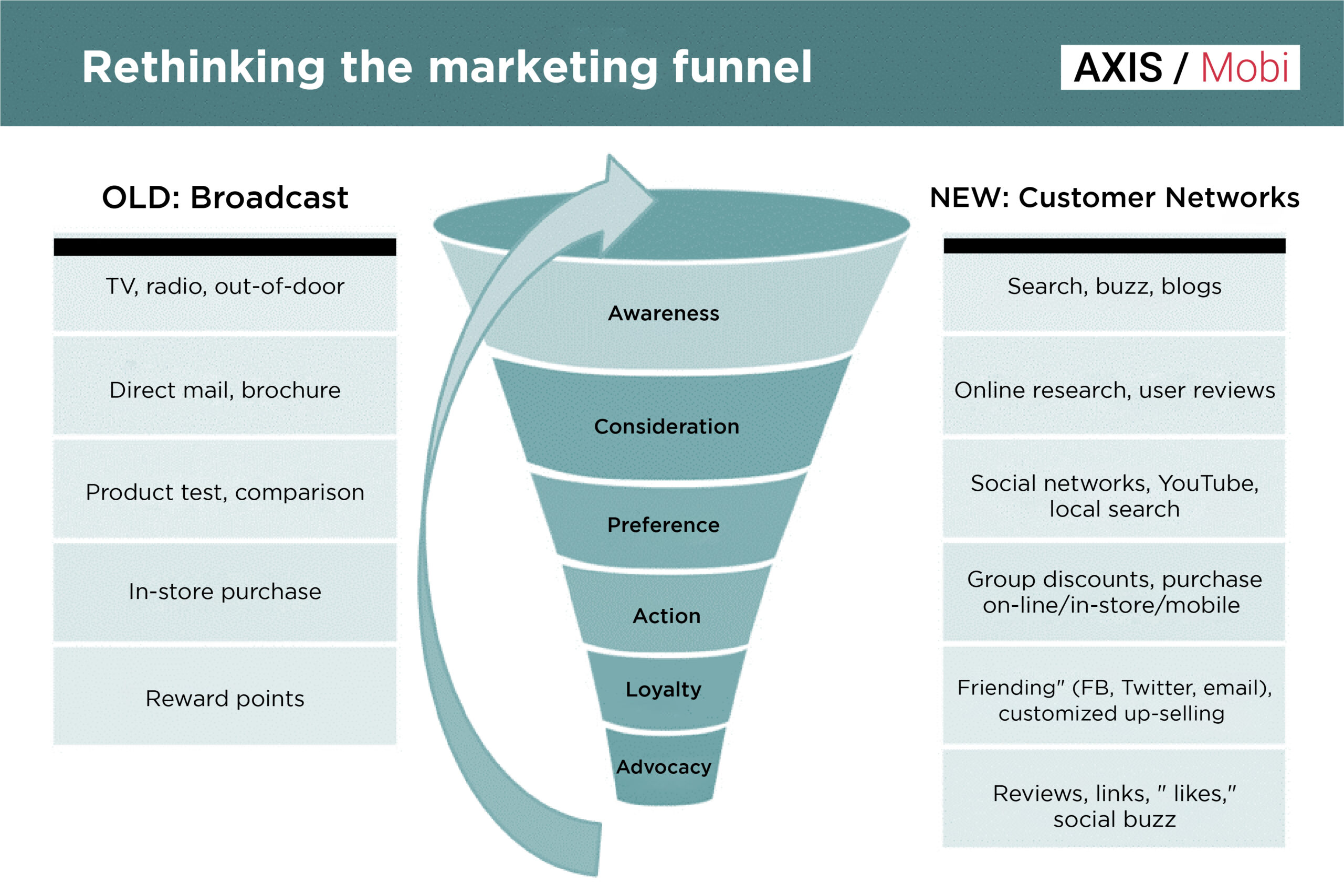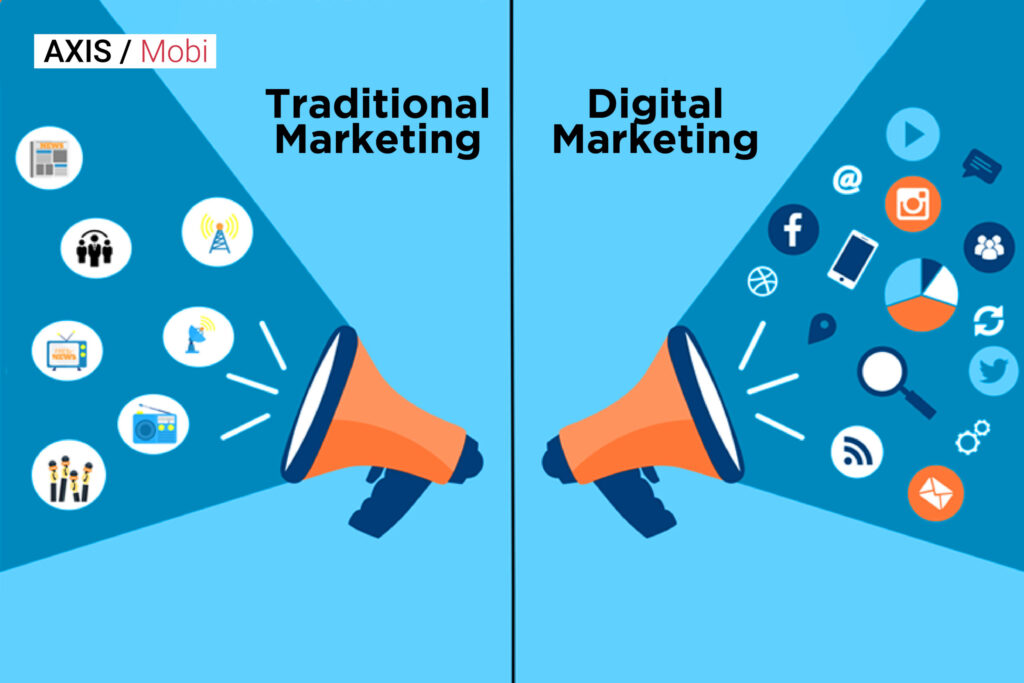While having a marketing budget is vital for every small business, it’s also critical to use it wisely and effectively. Regarding digital marketing vs conventional marketing, how do you determine where to put your money?
Many firms find it challenging to make the appropriate “marketing” decision, even though it may significantly impact their bottom line. Still, by acquiring a better understanding of the difference between digital and conventional marketing, a firm may better understand which marketing strategy is most effective and how it should be implemented.
For instance, social media marketing promotes a brand and expands its consumer base.
It’s not always enough to choose the right market or have a high-quality product to run a successful business. But it’s also about using the correct marketing methods to connect with your target audience and convert them into leads or customers.
Some firms may place a lower priority on marketing, but every serious business that wishes to grow earnings must prioritize marketing. It will almost always have a sufficient marketing budget.
Even after recognizing the need for good marketing, the digital marketing vs conventional marketing argument may be perplexing. The cause is the misunderstanding related to the fact that much marketing is conventionally done. Digital marketing continues to gain traction.
Yes, a segment of the population does not utilize the Internet for any transaction. However, a sizable portion of the population uses the Internet regularly for various activities.
As a business, you must stay one step ahead of the competition. Resulting, you can no longer rely on out-of-date marketing techniques. Go outside the box and figure out how to use the most up-to-date digital marketing tactics to expand the reach.
Before we go into the nitty-gritty of digital marketing vs conventional marketing, there are a few things to consider.
Let’s start with some of the fundamental concepts you’ll need to grasp.
Q. What is the difference between digital and traditional marketing?

Traditional marketing is nothing new; we’ve all been exposed to it at some time in our lives. It is a conventional technique of marketing that uses numerous offline advertising and promotional strategies to reach a semi-targeted audience. Traditional marketing is a hard-to-ignore style of marketing that comprises the traditional advertisements we see regularly.
Many of the most prevalent and tried offline marketing strategies fall into one of five categories:
Create a print (magazines, newspapers, etc.),
Dissemination (TV, radio, etc.),
Mailing Lists (catalogues, postcards, etc.),
Telecommunications (telemarketing, SMS marketing, etc.),
In the open air (billboards, flyers, etc.).
Traditional marketing has altered throughout the years, but the fundamentals have remained consistent. The standard four P’s of marketing: product, pricing, location, and promotion are actively used in today’s selling strategies.
Every successful company understands the importance of having a well-designed sales funnel. A company may effectively lead its prospects and customers through any sales conduct using the four P’s of marketing and achieve positive results.
Let’s take a quick look at each of the four P’s that underpin any marketing strategy:

Product: A thorough grasp of your product is essential for effective marketing, which might be an intangible service or sort of product that meets a specific market’s desire.
Price: The total cost of the product is determined by how well you understand it. When it comes to matters like supply, demand, profit margin, and so on, price is always the deciding factor.
Promotion: It is the process of getting the word out about your product and marketing it to your target audience. Any approach that aids in promoting the product and its increased visibility/exposure falls under the category of promotion, whether it’s a billboard commercial or a Facebook ad campaign.
Place: Traditional marketing depends primarily on placing your product before your target customer at the right time and in the correct location. This also entails setting the right price. In the realm of marketing, positioning is vital. Because placing a product in an optimal area increases the likelihood of turning prospects into buyers or clients by a factor of ten.
On the surface, digital marketing appears to be very different from traditional marketing in that it focuses on the fourth P: promotion.
Digital marketing, on the other hand, is very effective since it does not overlook any of the four Ps of marketing. It instead makes use of each of them in a unique way, sometimes even better than traditional marketing.
Q. Traditional Marketing vs Digital Marketing: What Are the Drawbacks?

Traditional marketing is still thriving, but it isn’t the only approach to get your product in front of your target audience. Technology has progressed to the point that it now allows businesses to engage with their customers in ways they never have before, which is why you should think about the disadvantages before engaging in traditional marketing.
Interaction is limited:
One of the most significant and evident disadvantages of digital marketing is that clients and the medium used for marketing have little or no contact.
Traditional marketing is a one-way street where a company can broadcast or deliver information about its product or service to its target audience. This exercise in brand development is being done to attract the right people’s attention and maybe convert them into consumers.
There is no way to control the timing:
Traditional marketing relies on advertising strategies that can’t be changed after being implemented. It doesn’t matter if it’s a static text print ad in the local newspaper or a television advertisement. If anything changes, you’ll need to publish a new ad to replace the previous one. While this may not appear to be a significant element, it does have a substantial impact in the long run.
Let’s imagine you’re running a magazine ad to promote your latest gadget. After that, you make a massive change to it that might significantly influence sales. Is it possible to modify the ad on the fly? Of course not, which might result in a significant reduction in your marketing expenditure.
Increased Costs:
Traditional marketing’s ongoing expenditures might be a significant investment that may or may not yield a satisfactory return. Your local newspaper ad will only be effective if your target audience sees it when it is published. What are your chances of that happening?
You’ll need to build and execute a new print ad campaign if you want to reach out to them again. Similarly, when you design and distribute posters or fliers in your community, you invest a one-time exposure. Consider the material you develop for your website, which may attract targeted visitors for years at no further expense.
Customization Options Are Limited:
Do you want to target clients who work in a specific sector and are in a certain age bracket? When it comes to tailoring your campaign and targeting individual clients, traditional marketing is limited.
You can promote specific segments using conventional marketing approaches, but you can’t go for particular clients. You have the choice of not just reaching out to the proper sort of clients when you use internet advertisements. Show them offers that are personalized to them, as well.
It’s not possible to update it easily:
One of the benefits of digital marketing, let’s face it, is how readily it can be updated and altered. Unlike traditional marketing, where tweaking takes a lot of time and work. What if your print advertising has the wrong % discount? How can you fix it if the ads have already been printed?
On the other hand, editing a digital marketing campaign is as simple as clicking a few buttons.
Inability to Provide Complete Pricing Information:
Traditional marketing has never failed to entice individuals based on discounted pricing or special promotions at the most basic level. When it comes to giving more unique, personalized price alternatives, though, you may find a roadblock.
Suppose you examine the print marketing possibilities available to you. You might not have enough room to present all of your price alternatives, even though they can help you convert more individuals into clients.
The measurement of the campaign was poor:
When implementing a traditional marketing approach, it’s critical to understand how effective it is to guarantee you’re not wasting money. Standard marketing outcomes, unfortunately, are complex and time-consuming to monitor.
When you establish an internet marketing campaign, on the other hand, you can quickly see where you’re going wrong and whether or not it’s working. This alone distinguishes digital marketing from its traditional equivalent.
Q. Digital Marketing vs Traditional Marketing: What is Digital?

The advertised related work that a firm undertakes using the Internet or an electronic device such as a mobile phone is digital marketing or online marketing. Digital marketing may be used by any company (regardless of size) to reach out to their target market. Convert more prospects into customers/clients by connecting with them.
Digital marketing encompasses everything from search engine marketing to Facebook marketing. Because the Internet is becoming one of the most widely utilized technologies, digital marketing is critical nowadays. People increasingly use the Internet to conduct their daily activities, including purchasing products and services.
If you go back a decade, you’ll see that web marketing has exploded. When it comes to digital vs conventional marketing, it’s evident that digital has the upper hand. Successful marketing necessitates a company’s ability to engage with prospects and consumers in the most effective way feasible.
As a result, there is a real return on investment, given that the vast majority of individuals (particularly Millenials) spend their time online. It makes sense for you to engage with them as a company. As technology advances and new digital concepts come to life, so does the digital marketing sector.
Where Should You Invest in Digital vs Traditional Marketing?

Setting a marketing budget is one thing; ensuring a decent return on your investment is quite another. As a result, it makes sense to concentrate solely on the marketing channels and tactics that will provide you with the most bang for your dollars. The battle between digital and conventional marketing is long, and it’s far from done.
However, given technological advancements, there is no doubting that digital marketing may assist a firm in generating quality leads/sales without breaking the bank.
When compared to traditional marketing, the risk is far lower.
Look around, and you’ll see that businesses of all sizes are utilizing digital marketing. Particularly since, as compared to offline marketing tactics such as print advertising, it has a lower cost/barrier to entry.
While print advertisements may help a firm develop a solid basis for successful promotion, digital marketing can help a company build a strong foundation for effective advertising. It may also be accomplished on a much-reduced budget.
Q. Why Should You Use Digital Marketing Instead of Traditional Marketing?

Traditional marketing may be too expensive to ignore for some firms, particularly those with a sizeable offline following. However, internet marketing may be a lifesaver for many small businesses seeking to build a name for themselves on a shoestring budget. As a result, many new and existing firms embrace digital marketing and rework their marketing funnels.
1: Customer Engagement at a Higher Level
Traditional marketing does not allow direct customer involvement. However, digital marketing allows for more engagement and interaction.
Whether through social media comments or email communications, we want to hear from you. Your target audience is directly connected to you through numerous digital marketing platforms. By communicating with consumers via video, surveys, or webinars, your company may quickly develop better and longer-lasting relationships with them.
When your business functions in tandem with the needs of your consumers, it performs better. And digital marketing enables you to accomplish so by allowing you to communicate with clients and address their issues/problems quickly.

2: Results Measuring Ease
When you hand out pamphlets, distribute leaflets, or place ads in periodicals, you have no idea how effective your marketing will be. There’s no way of knowing whether you’re going on the wrong path. Digital marketing, unlike conventional marketing, allows you to track results. It enables you to play a clear-sighted rather than a blind marketing game. You have a wealth of information on your prospects and customers at your fingertips to assist you to figure out where you’re heading, from the number of visitors who visit/leave your website to the proportion of those that convert.
Consider how much tweaking and testing you can perform with digital marketing that you can’t do with traditional marketing.

3: A Broader Audience
Traditional marketing has several drawbacks. One of the most significant limitations is going beyond a regional or local audience. Why restrict your reach if your company isn’t geographically bound? You may develop a highly tailored campaign using digital marketing and expand your reach to multiple locations or even nations.
So say goodbye to traditional marketing’s blanket approach and welcome to digital marketing, which allows you to customize your campaign based on how far you want to go.

4: Low-Cost & High-Efficiency
When it comes to marketing, your return on investment determines whether or not your campaign was a success. It’s no surprise that digital marketing provides a higher return on investment because it is less expensive in many ways than traditional marketing/advertising.
Would you rather spend money on a performance-based advertisement or a pricey newspaper ad that only reaches a small audience? You may pay less while earning more with digital marketing. It’s a no-brainer for many firms.





Pingback: Switch from Billboards to Outreach Marketing for Fast Result
Pingback: Embracing Data Driven Marketing for Improved ROI
Pingback: Digital Marketing Agencies Campaign - Success Story Unveiled